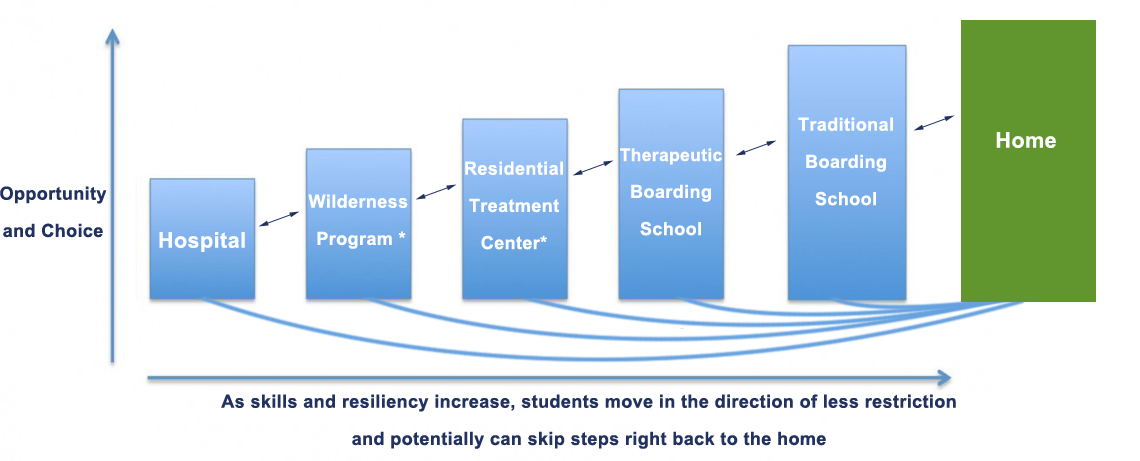The Meyer Continuum Of Care
Parents embarking on the process of finding help for a troubled teen are often overwhelmed and discouraged by the upheaval their child’s behavior has created in the family. They have exhausted home resources and are looking for professional guidance. To help parents visualize the therapeutic options available to their family, we have created the Meyer Continuum of Care.
At Meyer EFS we believe students should be in the least restrictive setting they can manage safely. We advocate for our students to have ongoing opportunities to be with family and in the community to gain skills.
Our philosophy is based on our many years working in schools and programs. We’ve learned what students need to succeed not only while in placement, but more importantly, in the long run."
The illustration below shows the levels of structure and choice in each setting. Most students need only one or two placements. Our goal is not only to place the student at the right location along the continuum, but with the right program for their unique educational and mental health needs. By understanding the continuum of care parents can understand the level of care that is most appropriate for their child.
For example, your child may attend an Outdoor Behavioral Health Program and demonstrate tremendous growth, graduate and return home with the skills and confidence to be successful. Another child may attend a OBHP and make great strides, yet may need to further practice the skills he or she has acquired at a therapeutic or traditional boarding school. Our goal is to move students through the continuum of care as they develop skills and resiliency.
Between each of the stages in the continuum, home may be an option.
The boxes in the diagram get larger as you move from one setting to another to indicate the level of choice and opportunity for students.
It’s natural for parents to want their child to have as ‘normal’ an experience as safely possible, and some parents hope their child can be in a mainstream setting. That is our goal too; however, we do not want to place our students in the “deep end” of the pool without first seeing if they can swim. It’s necessary to understand that many adolescents in need of therapy/treatment need a more structured setting initially. In many situations a smaller more contained setting can “crack the shell” and get to the root cause of challenges. Once this occurs and your child is both aware and accountable, the trajectory towards real and sustainable life change accelerates.

